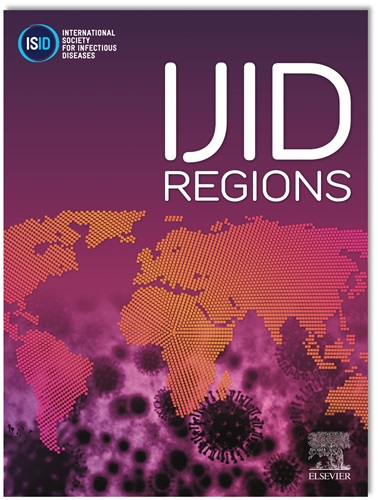A rapid and sensitive extraction-free HiFi-LAMP assay for detecting Mycobacterium leprae
IF 4.8
2区 医学
Q1 INFECTIOUS DISEASES
引用次数: 0
Abstract
Background
Timely and accurate detection of Mycobacterium leprae (M. leprae) is crucial for efficient treatment and early intervention of leprosy, which requires a simple and rapid extraction-free assay.
Methods
A HiFi-loop-mediated isothermal amplification (LAMP) assay was developed for detection of M. leprae. The performance of the assay was assessed by comparing with qPCR and nested PCR assays using clinical samples. The extraction-free HiFi-LAMP assay was assessed by saliva from individuals with leprosy.
Results
The M. leprae HiFi-LAMP assay has high specificity and sensitivity with a limit of detection (LOD) of 43 copies/25 µL reaction. Both sensitivity and specificity of the HiFi-LAMP assay were 100% for 130 purified DNA from nasal and oral samples, and the sensitivity was slightly higher than 50%-88.9% by the qPCR assay. A higher detection rate of M. leprae was observed in nasal swabs than oral swabs. The extraction-free assay directly using 6 µL saliva has a LOD of 11,833 M. leprae RLEP copies/mL saliva, can be completed within 30 mins, and showed 66.7% sensitivity for three saliva samples when compared with the assay using purified DNA.
Conclusion
The standard and/or extraction-free HiFi-LAMP assays can be used for detecting and monitoring M. leprae in endemic areas in resource-limited settings.

一种快速灵敏的无提取HiFi-LAMP检测麻风分枝杆菌的方法。
背景:及时、准确地检测麻风分枝杆菌(M. leprae)对麻风的有效治疗和早期干预至关重要,需要一种简单、快速的无提取检测方法。方法:采用HiFi-LAMP法检测麻风分枝杆菌。通过与使用临床样本的qPCR和巢式PCR方法进行比较,评估该方法的性能。通过麻风病患者的唾液来评估无提取物HiFi-LAMP测定。结果:麻风分枝杆菌HiFi-LAMP检测具有较高的特异性和敏感性,检测限为43拷贝/25 μL。该方法对130份鼻、口样品的纯化DNA的灵敏度和特异性均为100%,灵敏度略高于qPCR法的50-88.9%。鼻拭子麻风分枝杆菌检出率高于口腔拭子。直接使用6 μL唾液检测麻风分枝杆菌RLEP, LOD为11,833份/mL唾液,检测时间为30 min,与纯化DNA检测相比,3份唾液样品的检测灵敏度为66.7%。结论:标准和/或无提取HiFi-LAMP检测方法可用于资源有限的麻风分枝杆菌流行地区的检测和监测。
本文章由计算机程序翻译,如有差异,请以英文原文为准。
求助全文
约1分钟内获得全文
求助全文
来源期刊
CiteScore
18.90
自引率
2.40%
发文量
1020
审稿时长
30 days
期刊介绍:
International Journal of Infectious Diseases (IJID)
Publisher: International Society for Infectious Diseases
Publication Frequency: Monthly
Type: Peer-reviewed, Open Access
Scope:
Publishes original clinical and laboratory-based research.
Reports clinical trials, reviews, and some case reports.
Focuses on epidemiology, clinical diagnosis, treatment, and control of infectious diseases.
Emphasizes diseases common in under-resourced countries.

 求助内容:
求助内容: 应助结果提醒方式:
应助结果提醒方式:


